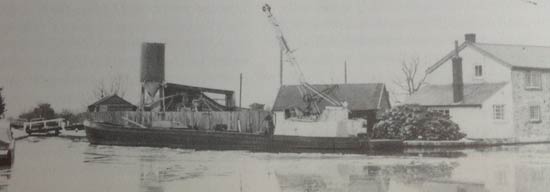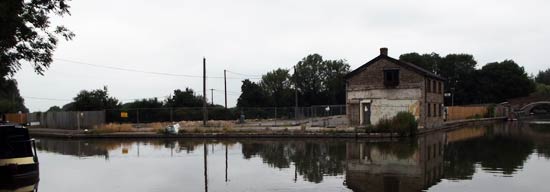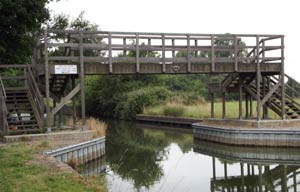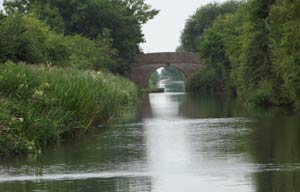The Aylesbury branch of the Grand Union Canal begins its journey towards the Town of Aylesbury from Marsworth, 6.2 miles away. Dropping almost 95 feet from its junction with the Grand Union, it travels through 16 locks and passes under 19 bridges, so there is plenty to see on the relatively short but eventful trip. For the purpose of this article, I concentrate on the history of the Arm and divide the journey into two. This first part will concern itself with the upper section from Marsworth to the pretty village of Wilstone.
There were plans to construct an arm to Aylesbury as long ago as 1793, but it took over 20 years until that proposal started to become a reality. The main reason for the delay was the reluctance of the Grand Junction Canal Company, which was already having difficulty providing the Main Line with sufficient water. However, the people of Aylesbury lobbied vigorously for ‘their’ branch and won the support of the then Marquis of Buckingham, who pledged the not inconsiderable sum of £1000 to the total of £5000 needed to begin construction.
With canal mania at its peak, the GJCC were persuaded by the argument that the canal would form a link from Aylesbury to the Thames at Abingdon and then onwards to join the Wiltshire and Berkshire Canal (thereby cutting out a journey into London in order to reach the West Country). However – opposition from other waterways quashed the plans, and the branch went to Aylesbury – and no further…
Starting from Marsworth (known by generations of boaters as ‘Maffers’) the arm begins its journey next to the now derelict BW yard. The yard used to house a number of buildings and a concrete manufacturing site that was the centre for the construction of piling used both on the canal and the River Lea throughout the 1950’s and 1960’s. Whilst never pretty, it acted as a reminder that the canals were built principally for trade rather than leisure. At the time of writing, the site is being cleared for development as luxury housing …
The first two locks form a deep and tight staircase, and remind boaters that all of the locks on the Aylesbury Arm are narrow. Immediately, the canal drops under the first of the 19 bridges – and scrapes and gashes in the brickwork are testament to the tightness of the arches. Be careful with anything in your narrowboat roof, particularly chimneys, as they can be swept off.
Most of the bridges still have the cast iron rails, deeply grooved by the ropes of countless horse drawn boats plying their trade. The first few locks are quite closely spaced, and fill and empty fairly quickly. Despite being a narrow canal, the upper gates are single whilst the lower gates are still mitred, a bit frustrating when trying to negotiate the locks on your own, as you have to cross to both sides of the lock.
Dropping through lock 4, known as Black Jack’s Lock (which has recently been relined) – you pass the very attractive cottage adjacent to the canal. Take a little time to admire its lovely gardens, because you are about to enter a dark and disturbing part of British history.
Bridge number 2, known as Dixon’s Gap Bridge leads to the village of Long Marston – famous for the last witch hunt in England. In 1751, a rowdy and murderous mob led by a local chimney sweep, Thomas Colley, dragged an elderly couple, Ruth and John Osbourne from their cottage. Although both over 70 years of age, they were accused of causing a local farmer’s crops to fail, and were to be tried by ducking. The terrified couple hid in the vestry of the local church, but were quickly found by the crowd. Stripped naked, and with their hands tied, both were thrown into a pond. Poor Ruth choked to death on the mud and her husband, who had been tied to her, died soon afterwards.
Local outrage followed, and Thomas Colley was charged with wilful murder. He was executed at nearby Gubblecote Cross, and his body left to rot, hanging in chains afterwards.
Returning to happier times, the canal continues on its journey, oblivious to its surroundings until it reaches
the pretty little village of Wilstone.Narrowboaters who travel on the Arm should take time to moor by the footbridge that crosses the canal, and walk the short distance into the centre of the village by skirting the side of the playing fields.
Bearing around to the right, walkers pass an attractive row of terraced cottages, before reaching the Half Moon pub on the left. Just beyond this, the small General Store provides all the basic needs for the villager or boater alike. Manned by volunteers, it is a classic example of a village shop struggling against the incursion of the major supermarket chains. It represents a classic case of use it or lose it.
Back to the canal, and just beyond the village lies lock number 9 – Wilstone or Gudgeon Stream Lock. It is here that the Gudgeon Brook, a feeder from nearby Wilstone Reservoir enters the arm, providing much needed water as the canal continues to drop towards its destination.
Beyond here, the canal starts to level out as it begins to cross the rustic Vale of Aylesbury – but that is the subject for the second part of this article…





